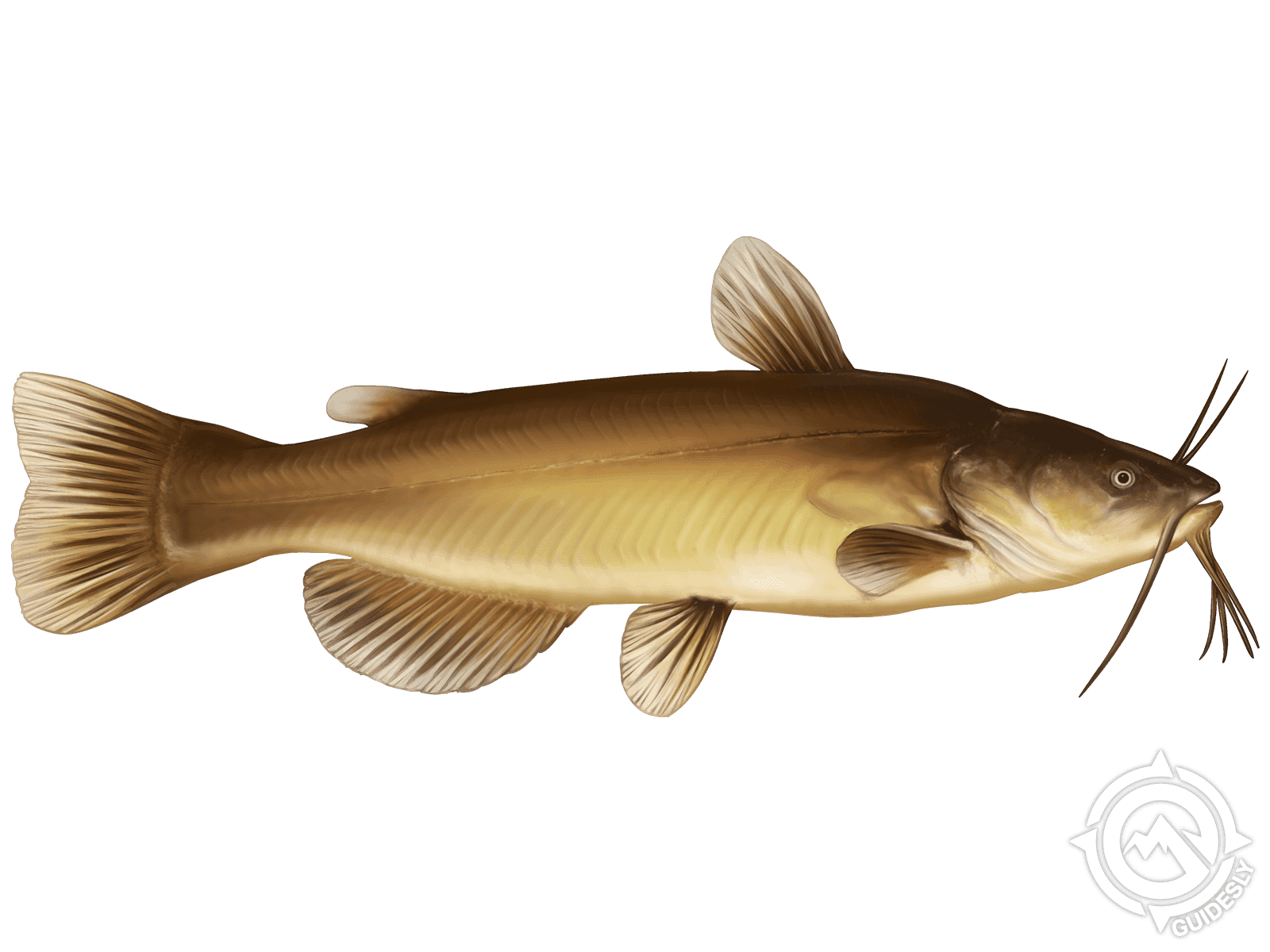Black Bullhead

Species Details
Ameiurus Melas
Ictaluridae
Siluriformes
River, Lake, Backcountry
1 - 5 lbs.
8" - 26"
Black Bullhead (Ameiurus melas) Description
Black Bullhead Catfish are known, like other catfish, for their barbels that are long like “whiskers”. Unlike the other catfish, it has a large head and grows significantly smaller than your native catfish. However, they do have a distinct feature which is the shape of their tail. Unlike the channel catfish, they have a squared tail rather than the typical fork tail that most catfish do. They also have a slightly humped back which some of their other catfish-looking kin don’t have. A Black Bullhead also doesn’t have an underbite whereas its other catfish kin do.
Similar to their catfish kin, they do not have scales. Instead, the Black Bullhead has a more slippery feel. They are covered in slime. But that’s because the mucus is what enhances their taste receptors which are covering their bodies. Black Bullheads have cardiform teeth, which are teeth that are short, conical in shape, and pointed all while forming a row.
Their fins are made of an array of spines and rays which they use to slash at predators or anglers. However, they can be mistaken for their brown cousin. But the main difference between a Brown Bullhead and a Black Bullhead depends on the number of spines and rays. While Brown Bullheads have around 21-24 soft rays, Black Bullheads an average of 17-21 but they have fewer “teeth” along their pectoral fins, unlike their brown cousin. Black Bullheads, as their name states, are predominantly black on their top side but their belly is somewhat a yellowish-white color.
Diet and Size
Black Bullhead catfish are bottom-roving omnivores. They eat a wide selection of plants and fish. However, the diet of Black Bullhead catfish depends on their age. Adult Black Bullheads eat young insects, specifically Midge larvae. However, they are also known to eat small fish and fish eggs as well.
Black Bullheads are significantly smaller than their Channel Catfish kin. Their average length is around 8-14 inches and weigh 1-2 lbs.
Interesting Facts
- Black Bullheads hibernate.
- During the winter times, Black Bullheads decrease their feeding frequencies. At times, they don’t feed at all.
- They then burrow in the sand and stay there until spring hits and they feed again.
- An average Black Bullhead has around 100,000 taste receptors covering its body.
- Black Bullheads are considered an invasive species in Europe.
- Black Bullheads’ spines are poisonous.
- The poison however is not fatal to humans. Though, it doesn’t mean that it won’t hurt.
- Black Bullheads are nocturnal fish.
- They prefer feeding at night.
Fishing Techniques: How to Fish for a Black Bullhead
Catching a Black Bullhead is a rare opportunity. It is why Blackheads are also considered a “rough fish”. Either most people don’t eat them enough or it’s a rare occurrence. Then again, like bottom feeders, Black Bullheads are also not really up in the day time. They prefer functioning at night.
Attracting a Black Bullhead takes a bit of patience. In the day time, they usually tuck themselves away under piers or the shady areas of shores. A lot of people say that fishing for a Black Bullhead can be as simple as dunking a worm or even a raw chicken liver into the water and waiting for them to snap.
Black Bullheads don’t have a water preference. But depending on where you water, it’ll affect the quality of meat. Black Bullheads can be found anywhere from ponds, streams, and even swamps.
As for techniques, people have reported that even using something as simple as a cane with worms can make them snap. They’re strong fighters and they will fight you to the death for their food. Black Bullheads are the kind who will throw a tantrum and go into a frenzy once they’ve latched onto their food. But better to use light-weight gear as it allows you to really feel if they’re up and biting.
Next, hook choice. Make sure you have an extremely sharp hook. A common mistake is that they use slightly dulled hooks. But catfish are known for having their hard skulls. If it takes several hits from a wooden plank with a piercing nail to kill them, a regular hook won’t do. Also, best not to cover the barb with the bait. Make sure the bait is deeper into the hook so your Black Bullhead won’t run away.
Habitat and Distribution
Black Bullheads don’t care where they are. Wherever there’s food, they’re bound to be there. They can live in lakes, swamps, and ponds. Some have even found them upstream. Because of their ability to crossbreed, they are quite a resilient species. However, they are known to gather near piers, dams, or as long it’s a confined space. Even if the place has low oxygen, they’re quite tolerant fish which allows them to be fished almost anywhere.







